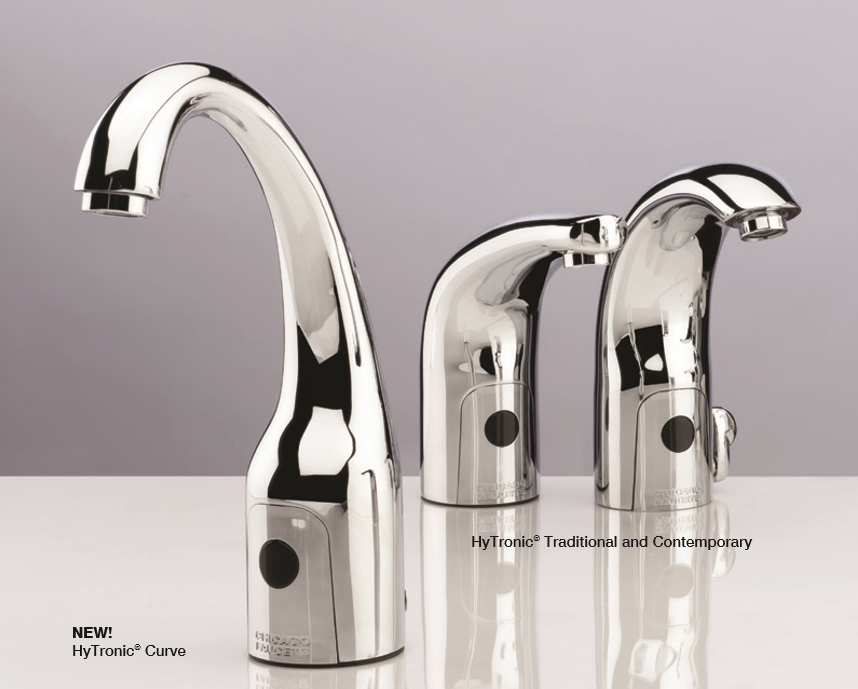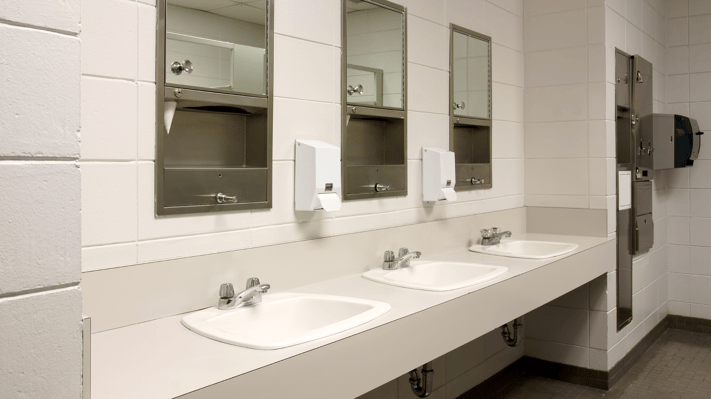
Written by: Carol J Alexander
The onset of the coronavirus pandemic forced germ control to the top of everyone’s priority list, specifically in the public restroom.
Properly designed, a restroom minimizes hand contact with fixtures and is easy to clean. But older buildings with dated components might not meet current sanitary standards. If you think the restrooms in your facility can use upgrades to limit the spread of germs, let’s look at a few common mistakes in restroom design and some quick changes and long-term options for fixing them.
Common Mistakes in Restroom Design
From doors opening the wrong direction to misplaced trash bins, there are several mistakes in restroom design that are easy to fix. Other design errors, like using standard floor-mount fixtures and porous floor and wall coverings, incur a larger expense. Here’s a break-down.
Quick Changes in Restroom Design to Limit the Spread of Germs
Doors
As surprising as it sounds, not everyone washes their hands before exiting a restroom. When people touch the door handle, they leave germs behind for the next person. A doorless entry eliminates this potential hazard. If the renovation budget won’t cover such an extensive remodel, consider installing doors that swing out, opening with the push of an elbow.
Touch-free accessories
Technology makes it possible for people to never touch a thing when using a restroom. From touch-free toilet flushing to throwing a used paper towel into the waste receptacle, visitors can enjoy an entirely hands-off restroom experience. A few quick changes include:
Soap dispensers—Dispensers equipped with motion sensors eliminate the need for touching a potentially germ-laden surface. Consider foam dispensers that use as little soap as possible to get hands clean.
Towel dispensers—According to a study published by the American Society of Microbiology, hot air hand dryers promote the spread of germs from the bathroom air to freshly washed hands. In light of these findings, John Ross, MD, FIDSA, contributing editor of Harvard Health Publishing’s Harvard Health Blog, believes that paper towels are still the most hygienic way to dry your hands.
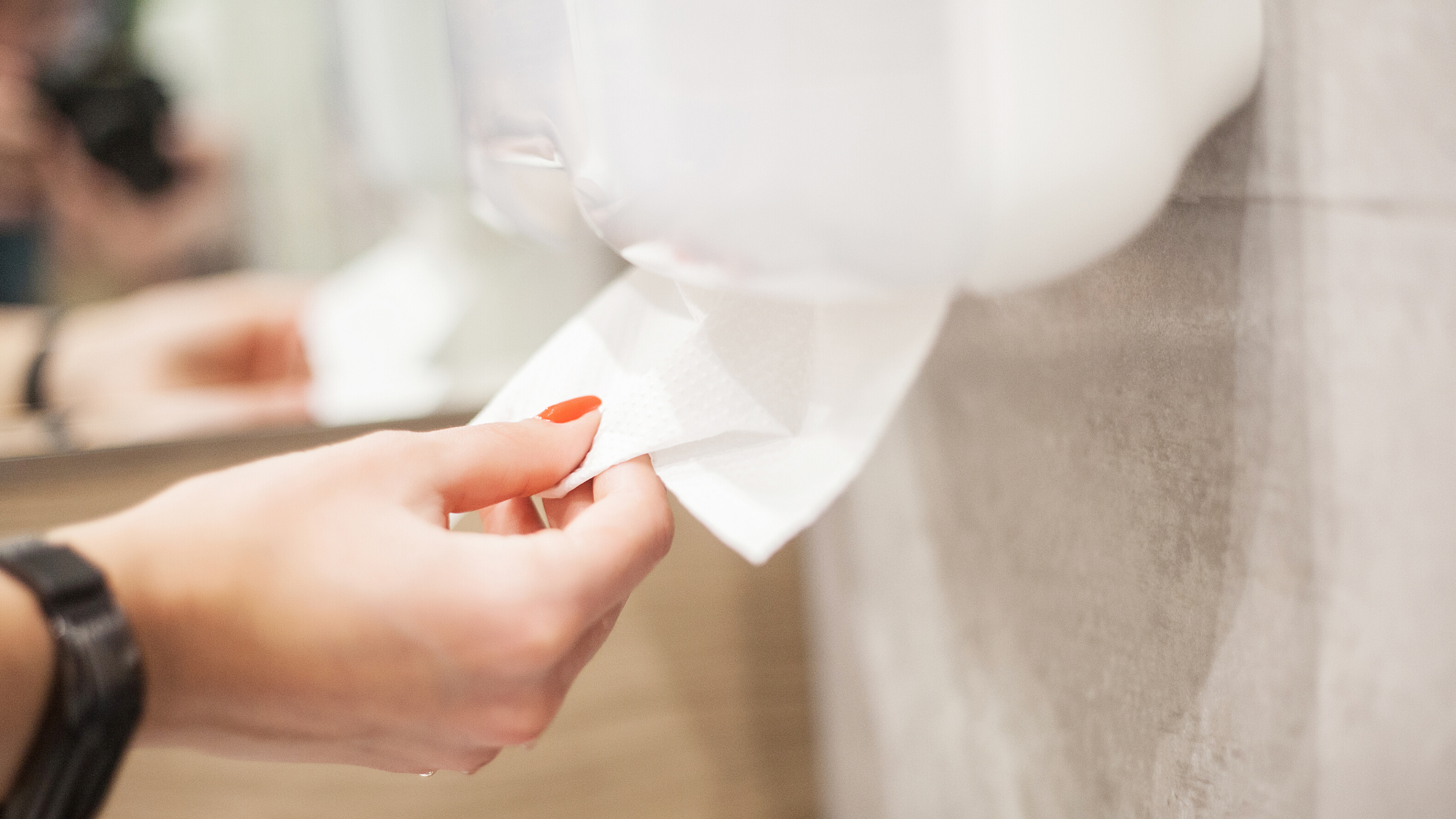
Touchless towel dispensers don’t have to be electronic. Some models simply dispense one towel at a time, which the user can release without touching the unit. After each towel is taken, a fresh towel is released for the next user.
Waste receptacles—The final step in a person’s bathroom experience is disposing of the used paper towel. Designers avoid open trash bins because they attract unwanted pests and release offensive odors. No one should have to touch the lid of a waste receptacle with clean hands, however: wherever possible, install lidded bins with foot or motion sensor controls. If your restroom still has an inward opening door, place the trash bin nearby so the person can use a paper towel to open the door and then easily discard it.
The Little Things
Sometimes, the little things make a difference. Hooks on the inside of stall doors provide a place to hang a handbag or sweater. Shelves near the sinks provide similar convenience but must be wiped down frequently to prevent germ transfer. Enclosed toilet paper dispensers protect the tissue from germs in the spray that comes from flushing a lidless toilet. At the minimum, these items should be included in every restroom.
Long-term Options for a Cleaner Bathroom
If your budget allows, spending money on the following updates will limit the spread of germs in your public restrooms.
Surface materials
Porous surfaces hold moisture, a perfect breeding ground for germs. As a moderate upgrade, consider replacing drywall and paint with ceramic tile or stainless steel and vinyl flooring with tile. The American Restroom Association suggests using curved tiles in corners between the floor and wall rather than butting flat tiles that create a 90-degree angle where dirt can collect.
Wall-mounted fixtures
Wall-mounted toilets and lavatories make cleaning the restroom floor easier and leave fewer places for germs to hide. Cleaning crews do a better job with the mop if they don’t have to reach behind the base of a standard style toilet.
Touch-free components
If you’re switching out toilets and lavatories for wall-mount options, consider making them touch-free. Depending on your budget, you can get just the basics or all the bells and whistles.
Toilets—Sensor-operated flush valves on toilets and urinals eliminate the need for using one’s hand or foot to flush, limiting the spread of germs. These valves also save water by dispensing a pre-set amount of water with each flush.
Faucets—Water faucet handles also harbor germs. While the data suggesting how long the coronavirus is viable on a hard surface constantly changes, we do have solid evidence for other germs like influenza and staph. According to an article published by the Mayo Clinic, viruses like colds and flu can last for several hours on a hard surface. And according to the Center for Disease Control and Prevention (CDC), staph like MRSA can live on a surface for weeks.
Sensor-operated faucets include other options, too. Facility managers can manually set Chicago Faucets HyTronic Series faucets for a 60-second scrub mode. This feature helps hospitals, doctor’s offices, and other medical facilities to encourage their caregivers to follow the CDC handwashing guidelines.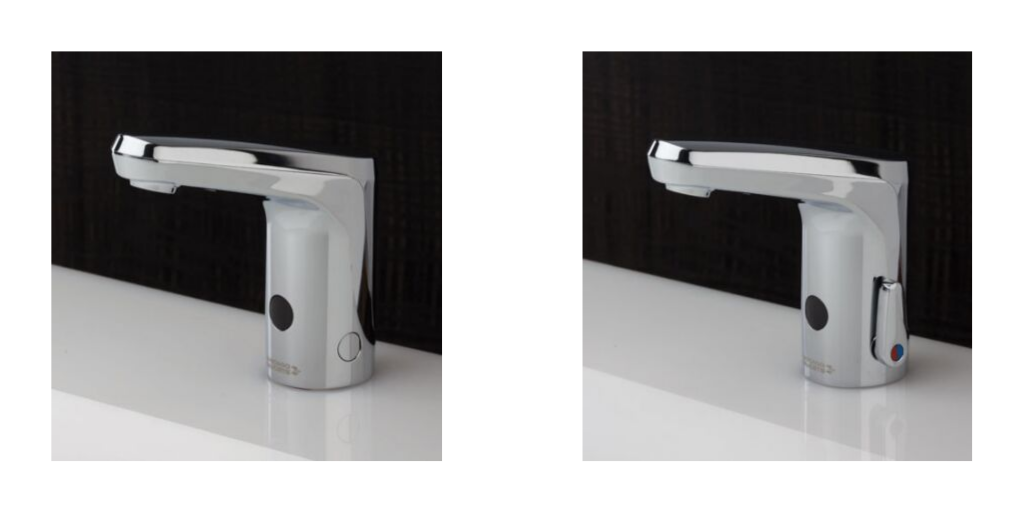
For the busy facility manager, Chicago Faucets offers the E-Tronic® 80 touchless restroom faucet. Like the HyTronic Series, E-Tronic 80 can be adjusted remotely with the Commander™ handheld programming unit. E-Tronic 80 is available with an optional, built-in, ASSE 1070-compliant thermostatic mixing valve, a practical add-on for schools or assisted living facilities that helps prevent scalding.
If your facility requires ligature-resistant faucets, Chicago Faucets offers a touchless option, the ELR Series. Powered by AA batteries or a hard-wired or plug-in AC transformer, this sensor-operated restroom faucet “resists attachment of cord, rope, bed sheet, or other material that may result in injury or loss of life.” It’s also compatible with the Commander™ handheld programming unit.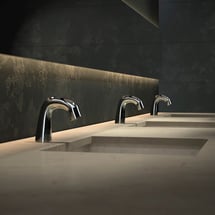
For the facility that wants a simple touchless bathroom faucet, the EQ Series is easy to install. Its heavy-duty, one-piece, solid brass spout comes in two beautiful finishes—chrome and brushed nickel. It includes optional ASSE 1070-compliant thermostatic protection and multiple power options.
Depending on the age or design of your building, updating a bathroom to lessen the spread of germs doesn’t have to be difficult. Start with some quick changes and work toward the long-term options. The end result will be happier, healthier restroom visitors.
.png)

